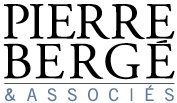Lot n° 97
Estimation :
3000 - 4000
EUR
Result with fees
Result
: 7 583EUR
André BRETON.
Les Vases communicants. Paris, Éditions des Cahiers libres, 1932.
In-12 : two-tone binding in silver paper and black box, smooth spine, geometrical decoration in hollow and in relief on the boards, grey suede lining and endpapers, gilt edges on witnesses, cover and spine preserved, folder, half-box case (Leroux, 1974)
First edition.
One of the 25 first copies on japon impérial (nº 19).
Composition by Max Ernst printed in pink and preserved in one piece: it slightly overflows the title page which, printed in black, is illustrated with a small drawing representing a dolphin. This layout is specific to the first edition copies: in the copies of the current edition, the image and the title are reproduced on the cover.
The "third Manifesto".
Marguerite Bonnet and Étienne-Alain Hubert underline the importance of the book, "which fully deserves to be considered as a third manifesto. It marks for Breton, after the painful experiences of 1931-1932, one of those recoveries of which he is accustomed when individual and collective crises threaten his intellectual and psychic integrity as well as the very existence of the group. But it goes far beyond that. An attempt to think the totality of life both from the exploration of the inner world carried out thanks to the contribution of Freud and from the presence of the world as it is apprehended - after and sometimes with Hegel - by Marx, Engels and Lenin, the book ends with a meditation on the place of the intellectual in the revolutionary struggle - a meditation that goes as far as questioning the place of man in perpetual becoming" (André Breton, Complete Works, II, 1992, p. 1369).
Autograph letter signed:
To Edmond Bomsel my favourite book
- is it because I no longer agree with almost anything he says?
December 1952
André Breton
Lawyer, bibliophile and collector, patron of several surrealists and many artists, Edmond Bomsel financed the opening of André Breton's Gradiva gallery (1937). He was also a shareholder of the Sagittaire publishing house where
Cours naturel was published.
After the war, he was one of the founders of the Compagnie de l'Art brut (1948).
Remarkable decorated binding by Georges Leroux with embossed decoration.
My orders
Sale information
Sales conditions
Return to catalogue

